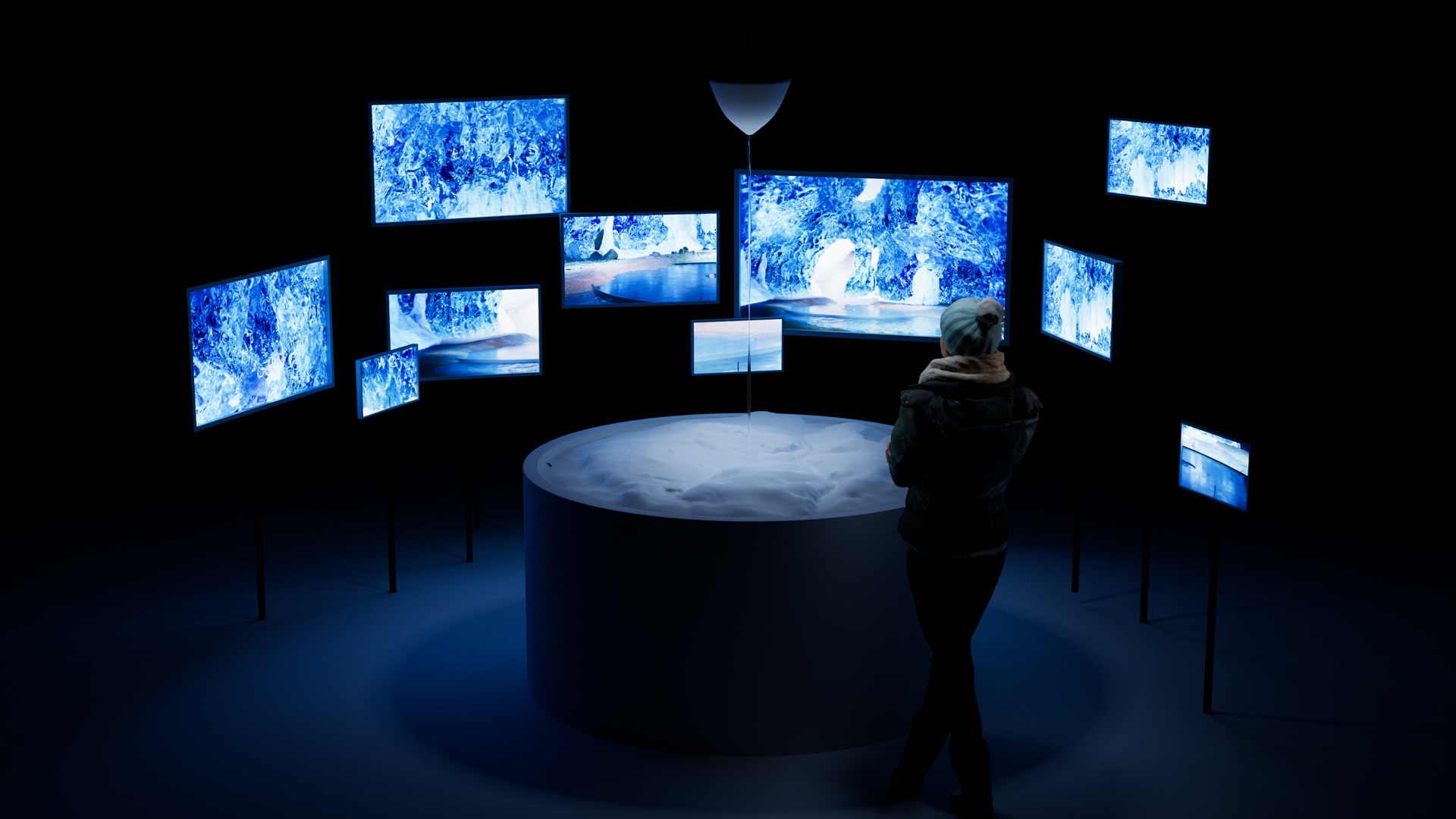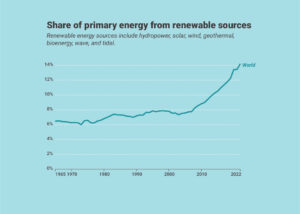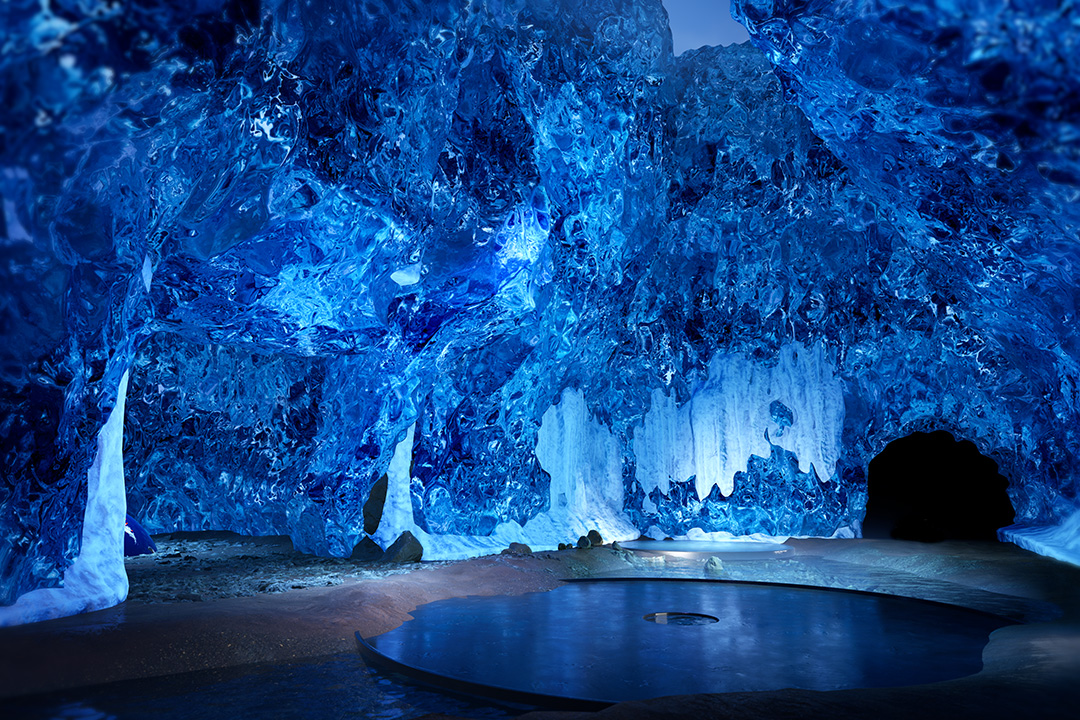
- Polar Ice Museum Rendering, by Ryan Zuber and Lisa Moren, 2025
The Polar Ice Museum is a series of artworks using polar data to create meaningful public engagement on the topic of climate change. This project is developed in a collaboration by iHarp and the IRC, under the leadership of Principal Investigator, Dr. Vandana Janeja.
Significance
Only the power of human will and creativity can meet the escalating threat of global warming that is impacting us all. Scientists emphasize that solving climate change requires broad public engagement, yet the abstract nature of climate data often fails to resonate with non-expert audiences. Additionally, the average person perceives what’s going on in the Arctic to be too far away to affect them personally.
Polar researchers at !HARP are part of an international network of scientists dedicated to studying polar ice, including geological constructions, its melting, rising sea levels, and the global impacts that follow. To bridge the gap between complex scientific data and the decision-makers and communities empowered to act, the IRC leverages polar ice research to create data-driven experiences. These experiences illuminate both the dramatic changes occurring in the Arctic and their tangible effects on local landscapes, including Baltimore. Through working with !Harp data, we aim to cultivate meaningful public engagement with the urgent realities of climate instability.
Project Description
The Polar Ice Museum exists as an installation, dynamic sculpture, and in virtual reality (VR/XR). Several monitors are arranged in a random semi-circle, displaying a 3D ice cave environment created by the IRC. Using the gaming engine software (Unreal), NASA data drives animation and events while the multi-channel output is continuous.
In front of the monitors will be a 4-foot white, circular tabletop sculpture with a 3D relief of a topographical landscape carved into it. Colored water will fill the relief sculpture, revealing a photographic image of a local business in Turners Point that faces flooding by the year 2050.
Collaboration and Methods


 Utilizing ¡Harp’s extensive geological data will describe the phenomenon from regions in Greenland where the geography underneath the snow and ice becomes visible due to a warming climate. Lakes begin to form in the polar region. Therefore, when data from the polar region expresses small amounts of melting, a small amount of colored water will fill the sculpture. When the data shows acceleration, the white sculpture is slowly transformed into a topographical photograph of a lake region. Simultaneously, an underwater audio track of ice in Greenland will be composed, where volume and speed are in sync with the lake spreading.
Utilizing ¡Harp’s extensive geological data will describe the phenomenon from regions in Greenland where the geography underneath the snow and ice becomes visible due to a warming climate. Lakes begin to form in the polar region. Therefore, when data from the polar region expresses small amounts of melting, a small amount of colored water will fill the sculpture. When the data shows acceleration, the white sculpture is slowly transformed into a topographical photograph of a lake region. Simultaneously, an underwater audio track of ice in Greenland will be composed, where volume and speed are in sync with the lake spreading.

Early Prototypes



Early prototypes were developed using 3D and virtual reality (VR), designed in Unreal gaming engine software. The graph shown on the upper right provides a very promising statistic that makes change seem possible.
Researchers and Creators
iHARP Principal Investigator: Vandana Janeja, Professor of Information Systems, Associate Dean of the College of Engineering and Information and Technology.
Co-Principal Investigators:
Art Direction: Lisa Moren, Director, Imaging Research Center
User Experience Scientist: Anita Komlodi, Associate Professor of Human-Centered Computing, Information Systems Department
Climate Scientist: Sudip Chakraborty, Research Assistant Professor, ¡HARP project
Policy Advisor: Yusuke Kuwayama, Assistant Professor, Public Policy
Animation and Modeling Lead: Ryan Zuber, Technical Director, IRC Staff
Audio and Music Composition: Evan McRae, Technical Director, IRC C1 Staff
Data Programmer: June Young, Technical Director, IRC C1 Staff
Students
Research and Design:
Taylor Goad, Graduate Student of Intermedia and Digital Arts
Lynn Nguyen, Graduate Student of Intermedia and Digital Arts
User Experience Science:
Iman Asfari, Volunteer Postdoctoral Researcher, Information Systems Department
Rishitha Achari, Human-Centered Computing student, Information Systems Department
Data Science: Tobi Williams, Undergraduate Student, Computer Science and Electrical Engineering; Data Science Fellow in the College of Engineering and Information Technology (COEIT)

